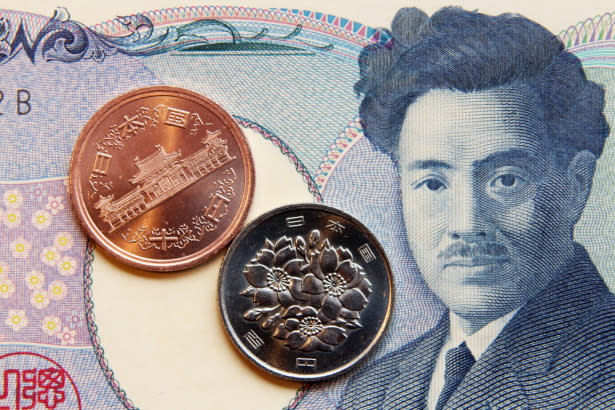USD/JPY Fundamental Weekly Forecast – Investors Questioning Yen’s Worth as Safe-Haven Asset

The major surprise in the Forex markets last week was the plunge in the Japanese Yen. The usual safe-haven currency posted its worst week in two-and-a-half years as worries about the coronavirus’ spread in South Korea, Japan and Beijing drove funds from Asia to the U.S. Dollar.
Following weak domestic data and growing fears about the coronavirus’ economic fallout, the Japanese Yen plummeted to its lowest level since last April as investors questioned its worth as a safe-have asset.
Last week, the USD/JPY settled at 111.575, up 1.791 or +1.63%.
Investors Fear Spreading Coronavirus Will Drag Down Asian Economies
As of Friday, the coronavirus has killed more than 2,200 people in mainland China and efforts to contain it have largely paralyzed the world’s second biggest economy. Also on Friday, South Korean authorities confirmed 52 new coronavirus infections, Yonhap reported, bringing its total to 156 and raising further alarm about the epidemic.
Two infected passengers from a cruise ship quarantined near Tokyo have died, and two passengers evacuated from the liner to Australia have now tested positive.
The jump in cases in South Korea and in Japan seems to have put a little fear in investors regarding Japan and the Yen’s appeal as a safe-haven asset.
Japanese Economic Reports
Concerns over the health of Japan’s economy began last Monday with the release of the Q4 2019 Preliminary GDP report and worsened with the release of reports on Core Machinery Orders and Flash Manufacturing PMI.
Japan’s economy shrank 1.6% in the fourth quarter of 2019, according to a government estimate released on February 17. The decline from the third quarter is the biggest contraction since 2014. The drop was even more severe – a 6.3% plunge – when measured as an annualized rate.
Revised Industrial Production rose 1.2%, but smaller than the 1.3% forecast and previous reading. Capacity Utilization came in at -0.4%. The prior reading was 0.3%.
Japan’s core machinery orders fell 12.5% in December from the previous month, dropping more than expected, government data showed on February 19. The month-on-month fall in core orders, a highly volatile data series regarded as an indicator of capital spending in the coming six to nine months, compared with the median estimate of a 9.0% decline in a Reuters poll of economists.
The Jibun Bank Japan Manufacturing PMI dropped to 47.6 in February 2020 from 48.8 in the previous month and well below market expectations of 49.0, a preliminary estimate showed. The latest reading pointed to the steepest pace of contraction in the manufacturing sector since December 2012 amid the coronavirus outbreak, while activity was already under pressure following the sales tax hike and devastating typhoon in October.
Weekly Forecast
Why did the Japanese Yen weaken last week? Japan’s economy is flirting with recession and the coronavirus could put it over the edge. Last week’s data serves as proof that the virus is likely to stamp out hopes for an economic recovery in the first quarter and investors lost confidence in the currency as a safe-haven asset.
The Dollar/Yen blew past the 112 level last Thursday to a 10-month high against a broadly stronger U.S. Dollar. The catalysts behind the surge were increasing concerns over Japan’s economic health. Although demand for the dollar softened on Friday due to weaker-than-expected U.S. manufacturing and services PMI data, conditions are ripe for further upside action this week especially if the coronavirus continues to spread in Asia.
In my opinion, it’s going to take a while for investors to regain confidence in the Japanese Yen after last week’s debacle.
This article was originally posted on FX Empire
More From FXEMPIRE:
Natural Gas Price Prediction – Prices Slip but Close up Nearly 4% for the Week
EOS, Ethereum and Ripple’s XRP – Daily Tech Analysis – 22/02/20
USD/JPY Fundamental Daily Forecast – Coronavirus Driving Japan’s Economy to Recession
Oil Price Fundamental Weekly Forecast – Industry Preparing for Demand Shock Due to Coronavirus

 Yahoo News
Yahoo News 